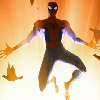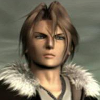 AllosaurusMember4115 XPSep-27-2018 6:31 PM
AllosaurusMember4115 XPSep-27-2018 6:31 PMSiberia, Russia, 252,000,000 Years Ago
The year was 252,000,000 BCE. Humans had not yet evolved; dinosaurs hadn’t even evolved. There was no grass, and the seven distinct continents we know today do not yet exist. Instead, there is one massive landmass, called Pangaea. The supercontinent is separated into two smaller continents called Laurasia and Gondwana, with a vast mountain range separating them. On either side of the mountain range, vast deserts, the biggest the planet has ever seen, dominate the land. And they are teeming with life.
Herbivores like Dicynodon, Scutosaurus, Diictodon, and Lystrosaurus feed on the planet’s vegetation. In turn, they are preyed upon by the original saber-tooth: a Gorgonopsid called Inostrancevia. This fierce species is the top predator, thriving on the plentiful food. With prey so plentiful, they left half-eaten carcasses in their wake; perfect for tiny scavengers like a mammalian ancestor called Thrinaxodon. Life was thriving in this Permian paradise, but the greatest disaster the world had ever known, was brewing.
Deep beneath the Earth’s surface in Siberia, lava has been building up for thousands of years, and now it’s finally ready to erupt. The animals of the land had no idea what was coming for them as the ground began to rumble. A twenty-mile gash cracked open the ground as a loud booming sound filled the air. Lava poured out from underground, burning countless victims alive. The worst mass extinction in Earth’s entire history, the Permian Extinction, the Great Dying, has begun.
***
The lava flows were only the beginning of the apocalypse, but they brought devastating consequences with them. They released vast amounts of greenhouse gases like Carbon Dioxide and Methane into the atmosphere, as well as volcanic snow, which killed off the vegetation. Global warming increased at an exponentially-growing rate, suffocating the entire planet under a stagnant cloak of heat. The Ozone Layer was destroyed, temperatures only continuing to grow. Some gases mixed with water to create acidic rain, which only brought more pain to the land, killing the vegetation. The oceans were superheated, becoming stagnant and losing oxygen. Anaerobic bacteria began to form, releasing toxic gases into the air, which killed off animals in great swathes.
After the first eruptions, all the animals began a mass exodus from Siberia, with no destination; they were merely trying to get away from the Siberian Traps. However, the journey would be long and arduous, as the planet itself became harsh and forbidding to life. In time, 95% of life on Earth would know what it’s like to lose. To feel so desperately that they’re right, yet to fail nonetheless. It’s frightening, turns the legs to jelly. And I would ask them, to what end? Dread it. Run from it. Destiny arrives all the same, and now it’s here. Or should I say...the Great Dying is.
500,000,000 Years Later; 251,500,00 BC
Nearly 500,000 years had passed since the Great Dying began. For many species, the end was near. For animals like Dicynodon and Scutosaurus, only a single herd of these genera remained. The alpha-male Dicynodon, named Toothless, looked at the sky. The sun was still shining, but it was a bad sign. He and his herd were eating what little vegetation they could find in the vast Pangaean desert. His kind was on the verge of extinction, with generations not adapting to the Hellish conditions fast enough. The dire situation was the same for the last remaining Scutosaurus herd, led by a male named Shield. His group was also in need of food, munching on the vegetation as one Scutosaurus collapsed, dead from starvation.
He had no time to mourn, as he turned his attention to feeding his other herd-members. A lone scavenger approached the corpse: a female Thrinaxodon named Trident. She approached the body, turning around and letting out a low sound. Her young followed her as they began to eat the dead Scutosaurus. Her kind was small and adaptable enough to push through the Permian Extinction. In time, her descendants would rule the Earth during the Cenozoic Era. Trident’s mate had been killed by an alpha-male Inostrancevia, who was approaching the scene. She signaled to her offspring to bet out of the area, and they dug into the ground, burrowing beneath the surface.
The Gorgonopsid, weary from exhaustion and hunger, approached. He was named Vladimir for his infamy among the animals of the land. His kind had suffered millenia of hardship, with their food essentially vanishing before their eyes. He was the last of his species. The fierce, proud lineage of the Gorgonopsians is doomed. Vladimir began to sink into the carcass, pulling off pieces of flesh. The two herds left the area, weary of his presence. He did not mind, for he had food...for now.
Life during the extinction was brutal, with many species having already perished. Only a lucky few persevered, with one such species being the tough and resilient Lystrosaurus. The species had been hardened by years of hardship, seeing a dramatic change. They were smaller than their ancestors who had been alive before the extinction and had the genes best designed for surviving the foul air. One of the genus’ few persevering herds joined the Dicynodon and Scutosaurus. They were led by an alpha-male named Tusk. He was traveling south, a risky and perilous journey to make. However, the hardest choices require the strongest wills, and Tusk’s is nigh indomitable.
Trident and Tusk weren’t the only ones to weather this ancient storm. A reptilian predator, Archosaurus, was rising to the top of the food chain. The high temperatures were a boon for this cold-blooded killer, who thrived in this hot world. The strongest of the species, a male named Rex, had a special destiny. If he could survive the Great Dying, his group, the archosaurs, would rule the world and diversify into famous groups like the dinosaurs, pterosaurs, and marine reptiles. However, he and his mate, Regina, would have to survive the extinction. The pair had been forced out of their old territory by a group of Archosaurus. Regina was essentially defenseless because she was carrying their last surviving egg. Can they survive the Great Dying?
"Part of the journey is the end..."
 AllosaurusMember3811 XP2018-09-27 18:40:00
AllosaurusMember3811 XP2018-09-27 18:40:00Interesting first chapter to a unique and uncharted story. Looking forward to the rest.
Good grief.







